La Escombrera is a rubble pile above Medellín: it is considered to be Colombia’s largest urban mass grave.
For decades, women from neighbouring Comuna 13 have been claiming that bodies are buried in the debris: people from their neighbourhood who were murdered by paramilitary groups, often with the complicity of the Colombian state. They were ignored for decades, but the truth is finally being unearthed.
This is an ongoing story which I’ll be continuing to follow, but I wanted to bring you this chapter today - whether you read it or listen to the audio version I’ve narrated, I hope you find it as enraging and inspiring as I have.
In Latin American Spanish, ‘desaparecer’ is a transitive verb: it is not just something you do, it is something that can be done to you. In this region, you can ‘disappear’ someone - or ‘be disappeared’ yourself.
In Colombia, there are hundreds of thousands of so-called ‘forced disappearances’ - at least 112,000 people are officially registered missing, though the figure is estimated closer to 200,000. Around 5,000 are from Medellín, 500 of which are from one neighbourhood – Comuna 13.
The Search Unit is tasked with finding the missing. Its forensic teams scour the country, mountains and plains, deserts and wetlands, rivers and coastline, mass graves and unmarked ones. And now - La Escombrera, an industrial rubble pile looking over Medellín - a thick strip of grey scar tissue running through its dark green hillside.
A siren goes off, and a series of explosions thunder through the hillside into the hot, dense air around us. I look around the marquee, packed with plastic chairs. Nobody blinks. Below us, a digger trundles back and forth stripping back layers of earth from the rubble of La Escombrera, Medellín sweeps down the valley below it, the view sharp - almost brittle - in the vertical sunlight.
Twenty two years ago today, this hillside shook with explosions of a different kind. On 16th October 2002, the neighbourhood just below us suffered the largest urban military operation in Colombia’s history. For 100 hours, Operation Orion terrorised Comuna 13 - and many of the same families who now sit - unshaken by these blasts - in white chairs around me.
Photos are hung on string like bunting around the edge of the marquee, framing the panoramic views of the city, pictures of faces, accompanied by names and dates of disappearance. Almost all of the photos are of men - some young, posing in sunglasses and jeans, others look like old bolero singers, thick moustaches and lacquered hair shining in black and white film portraits. Some are children.
The front rows fill up with middle-aged and elderly women wearing matching t-shirts which read Mujeres Caminando por la Verdad: Women Walking for Truth.
Since 2002, this women’s collective has been asking the local government to search the rubble pile below us, believing that victims of murder and forced disappearance are buried there - some of them their husbands and sons who disappeared in the aftermath of Operation Orion.
A woman from the collective, leaning on a stick, approaches me and asks me to help her take a video of the marquee, which we then send to four of her WhatsApp contacts, her hands too shaky to do it alone.
She looks around and sighs. She feels like she had it easier, she tells me, in having a son who has been found, even though dead, rather than a still-missing son, a grave to visit rather than ongoing, torturous hope. She smiles weakly, pats my hand, and walks slowly away, towards one of many small groups of women stood around the marquee.
They were ignored for decades. A construction company even continued to use the rubble pile, and the group had to watch as tonne and after tonne of debris was thrown on top of where their sons and husbands were buried.
Finally, in August, excavation began here at La Escombrera, with such energy that the blasts to shift the earth don’t even pause for this gathering, lending it a slightly ominous feel as speeches are given between sirens and quakes.
Taking to a makeshift podium in the marquee, Luz Janeth Forero Martínez, Director of the Search Unit addresses the group, “What’s different today, in comparison to the many other years we have been here commemorating this event, is that now we are, finally, excavating the truth.”
After speeches from each of the dozen institutions now supporting the excavation, a huge storm rolls in, the city below us now lost in a shroud of rain as lightning cracks over our heads.
I talk to Luz Elena Salas, an activist and poet from Comuna 13 whose son was killed and disappeared by the paramilitary there.
“I had a dream that the dead - all dead things - make noise, and that if we learn to search, we can find. They can call me crazy or demented – but I have a lot of faith. I think they’ll find something in La Escombrera, to vindicate us – to prove that we aren’t crazy,” Luz tells me.
The dirt road up to the site has become impassable in the downpour, and we are trapped up there for two hours after the event, staring down into the top layers of La Escombrera as plastic chairs are packed away and the marquee is dismantled around us.
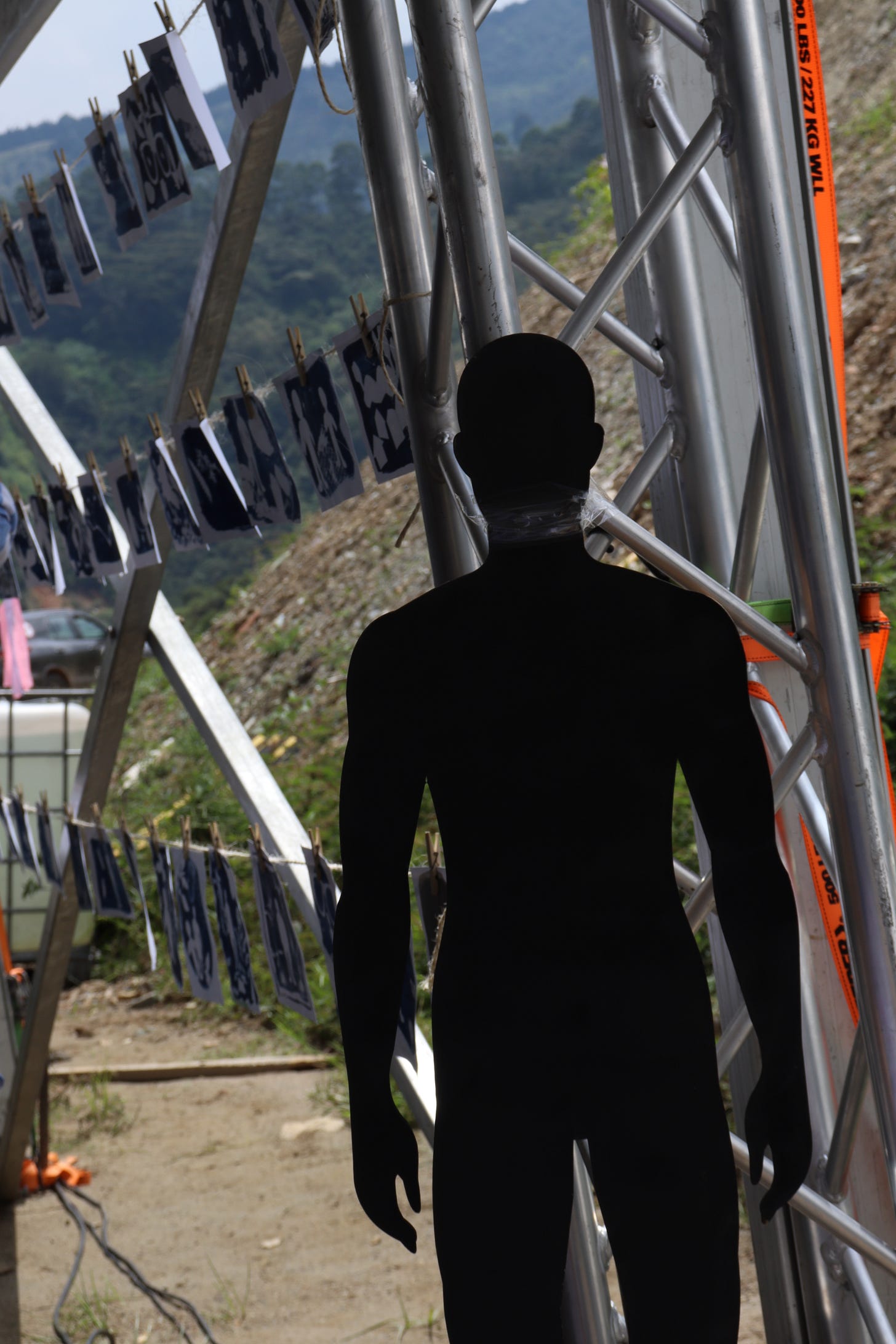
Orion’s Brutality
The neighbourhood of Comuna 13 felt the presence of armed groups as early as the 1980s, occupied by various militia and guerrilla groups and used as a trafficking corridor between Medellín and the coast. Violence escalated in the 1990s as groups consolidated their presence and clashed with the paramilitary groups which had taken over other parts of the city.
In 2002, a year of military operations began battering this neighbourhood – an onslaught which culminated in October with Operation Orion.
“From February of 2002, we would hear shootouts from nightfall to 5am. I had the roof broken from bullets and the front door even had a hole in it. They’d cut off our power or we’d even shut off the lights ourselves, so it seemed like there was nobody home,” Luz Elena Salas told me.
“During Operation Orion, they bombed us via land, air - from everywhere. We lived through things that even I ask myself how we survived.”
It went on for days. Homes were riddled with bullet holes and residents hid under mattresses from crossfire. More than a thousand people were displaced from the neighbourhood – many were arrested, many simply disappeared.
“But even after Operation Orion, it didn’t end: the police and army left us an inheritance: the paramilitary – hanging around everywhere,” Luz told me.
"They’re the ones who took my son.”
This ‘retaking of the neighbourhood’ from guerrilla groups was the launch of then-President Álvaro Uribe’s flagship ‘Democratic Security’ policy and set the tone for much of what was to follow during his mandate.
“Orion was more than a military operation, it was an ideological movement to impose a model of statehood, an idea of society based on control and security – a laboratory for social control in a neighbourhood which had a lot of grassroots politics,” said Adriana Arboleda, Director of the Juridical Centre for Liberty - she has been working with the women’s group for years.
Orion was just one of a number of state attacks on the entire community. Though it was much decried at the time, it has since been proven that it was carried out in collaboration with the city’s biggest paramilitary groups, to whom the area was then handed over, including the notorious Bloque Cacique Nutibara, led by alias Don Berna - a former associate of the Medellín Cartel.
The period following Operation Orion saw the highest number of forced disappearances during the civil conflict, amid the tight social control now exerted by paramilitary groups.
“Forced disappearances come with a message of terror and uncertainty, but they also allow authorities to present the area as ‘pacified’: because there are fewer homicides, there are no bodies,” said Max Yuri Gil, conflict investigator and Director of the Institute of Political Studies of the University of Antioquia.
“As for the disappeared, the authorities started to claim they had joined the guerrilla, gone into hiding, or just run away from home,” he told me.
"With murders, there are bodies. Bodies talk.”
In 2009, testimonies of demobilised paramilitary soldiers confirmed that La Escombrera was used as a burial place by the Bloque Cacique Nutibara paramilitary. Only in 2014 did local government put a stopping order on use of the site as a rubble pile.
Years later - even as tourists started to flock to Comuna 13 to hear the stories of urban transformation amid cable cars, electric stairs, and brightly-coloured graffiti - the women of the Mujeres Caminando por la Verdad collective were still seeking their dead and missing loved ones - ignored by the state and continually threatened and displaced for their activism.
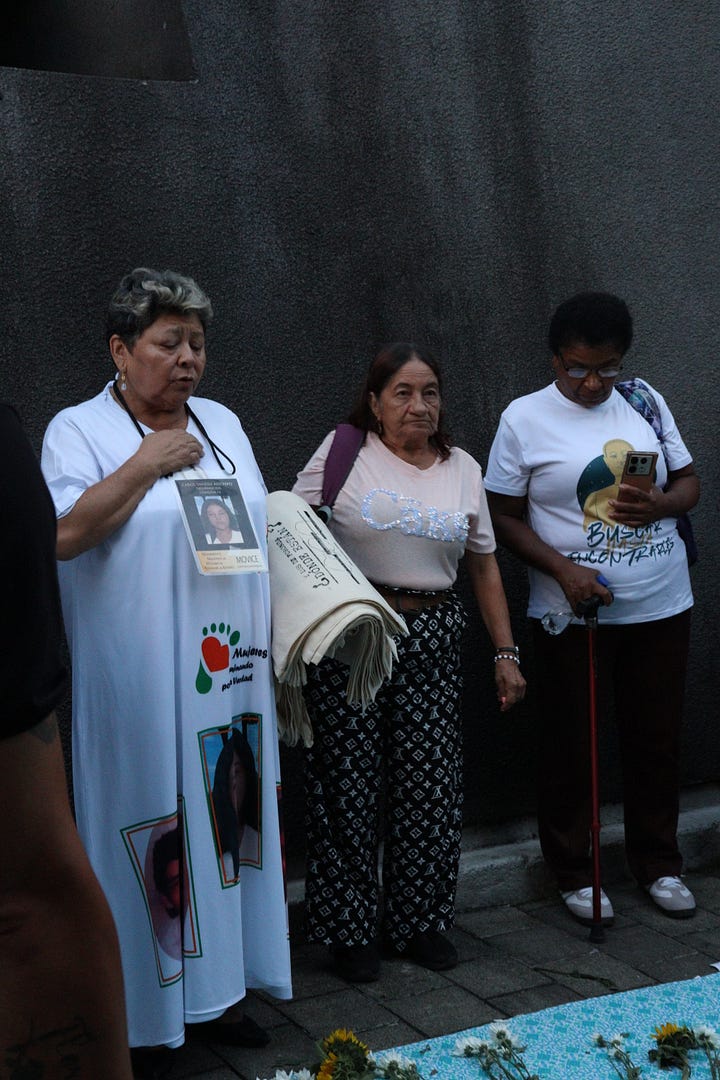
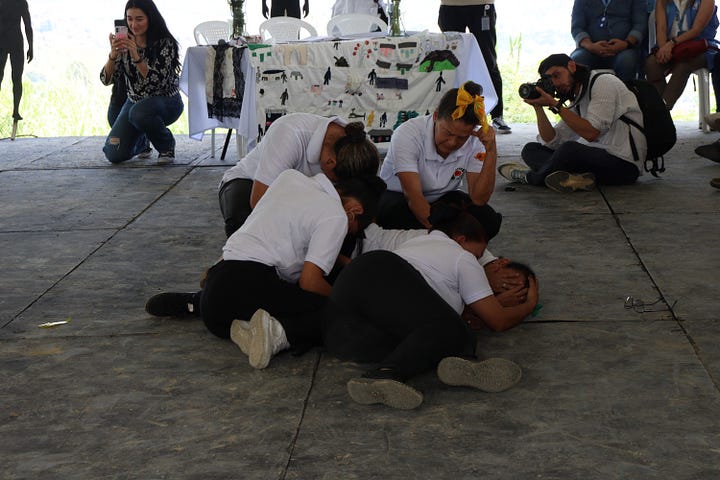
Las Buscadoras | The Women who Search
The excavation of La Escombrera is happening thanks to las buscadoras – the women who search.
In Medellín, this group has become known as ‘las Cuchas’ - local slang for ‘the Mothers.’ These women have tirelessly knocked on doors and searched for their missing - alone and together - as well navigating Colombia’s myriad government institutions and labyrinthine bureaucracy, campaigning, organising, and protesting too.
“Some people call us crazy old ladies who just want money – as if the lives of our children can be valued in money,” says Luz.
“I’ve heard people saying they should spend the money they’re spending on the excavation on roads or a project for women instead, but for the mothers of those missing, even a small bone – a fingernail – of their loved one is worth more than all the gold in the world.”
In Colombia, this situation is far from unusual: the efforts by partners and mothers to search for their missing loved ones has resulted in huge leaps in historical justice - and the discovery of buried truths about the country’s half-century of civil conflict.
Nonetheless, these women face huge obstacles and even threats to their lives, as their work implicates the perpetrators of these murders and disappearances - which include any or all of Colombia’s long list of armed actors: military, paramilitaries, guerrilla groups, and cartels.
Most of these missing were murdered, their bodies then hidden to avoid repercussions, either in mass graves, or tombs marked ‘NN’: ningún nombre – no name.
Yanette Bautista has been a ‘buscadora’ for four decades, since her sister was abducted and murdered by the military in the 1980s – from her searching work and consequent exile after receiving threats on her life, she formed the Nydia Erika Bautista Foundation, named after her sister, which supports buscadoras across Colombia.
We meet at the Foundation in Bogotá, a small office with a skylight which floods the room with the city’s pallid, overcast hues. We are surrounded - floor to ceiling - with files - files full of files and boxes full of files full of files. The Foundation has supported thousands of cases and works across the country - even collaborating with women’s groups abroad, sharing the wealth of experience which Colombia has given them.
Since the start of Colombia’s civil war, the missing have been sought by women, Yanette tells me - most often by their mothers - even after the state refused to look or had stopped looking.
“95% of the cases I see, it’s women doing the searching. Why are we, women, the ones who search?” Yanette says.
“It’s about being seen as ‘carers’ – that’s the role society has assigned to us – to care for the family - to cook, clean, iron, and look for the disappeared.” She has a gentle and kind manner, but her words are delivered with a clarity that gives them undeniable force.
“So, men left us in charge of looking for the disappeared – it’s that simple. The state, the church, the whole masculine sphere: they left us with that burden. Pure machismo. But through that work we became citizens and human rights defenders, we became aware that what we are doing is a lesson in dignity for all of society.”
This work has been done by women, across the country, often at huge cost – both economically as well as in terms of their safety: Yanette herself had to flee Colombia for years.
“For 40 years, they have denied us - and worse: years of violence against women who search, years of impunity for sexual violence, threats, lies, displacement, and kidnaps,” she says.
Last year, once again thanks to the efforts of women, a new law was passed in Colombia: Ley 2364 de 2024 guarantees protection of the labour of women searching for their disappeared, recognising their rights and status as key actors in peace-building.
“With this law, the history of buscadoras split into two. It's the only law like this in the world – we’re pioneers. But now it’s about implementation. We’ll have to fight for it – there will be a lot of challenges,” Yanette tells me, with a quiet energy which leaves me in no doubt that she will be on the frontlines of that fight.
Uncovering, Recovering
Three months on, I am stood over La Escombrera again, though it is barely recognisable. No longer a scar, it is now an open wound in the hillside, deep and expansive.
It is now January, and the earth has begun to speak - the language of the dead. Four sets of human remains were discovered in the last few weeks - now removed from the site to be identified and finally returned to their families.
It is another incongruously sunny day, the sun beating down and bleaching everything, blinding reflections glinting off the new plastic sheeting which secures the exposed dirt of the hillsides.
Forensic archaeologists have now spent months blasting and shovelling, and have reached the earth which would have been exposed in 2002. 37,000 cubic metres of earth have been removed - 28,000 tonnes - travelling back in time through the dirt to the early 2000s, the violent moment of history which now lies exposed below us.
The Search Unit, working with the Transitional Justice Court (the JEP), has borrowed machines and techniques from the world of mining: diggers rake the earth and spill it into trucks which roll up the hill through clouds of their own dust - to deposit it into huge machines which will meticulously sift through it all.
The group of journalists are led down the hill, on condition of our phones and cameras being left behind. We stand under a small shelter looking at the precise place from which remains have just been removed, damp brown earth marked with little colour-coded flags, an orange digger still pulling layers off the ground just feet away.
The discovery of bodies is, finally, vindication for the Mujeres Caminando por la Verdad, and a first step to proving what happened at La Escombrera in the 2000s, its history denied and hidden for so many years. It also means that four families will be delivered the remains of their loved one, and given an opportunity to give them a funeral and a dignified burial.
Luz got in touch again and told me,
“We women are prophets. I feel so satisfied - I always felt there was hope. After that dream about the noise of the dead, I realised that it was not just the dead who needed to make noise - it was us who had the make noise, so that the search would continue.”
But it is immediately clear that the details are too grim to allow any sort of real celebration. The report from the Search Unit confirms long-held suspicions about how this site was used by occupying paramilitary groups.
Forensics show that all four of the people found at La Escombrera died violent deaths, execution style killings. In at least one of the cases, there is sufficient evidence to suspect that the victim was reduced to a state of total defencelessness and subjected to torture.
Two of the bodies have been identified: a young woman, a community sports leader; and a young man, a disabled street-vendor.
For the other two, DNA has been extracted from the bones and is being run through the Unit’s database, hoping for a match in order to be able to return the remains to relatives.
But DNA is only a part of the story: though four people have been found among the remains, there are 38 findings so far. Forensics are crucial: not only where, how deep, and in what position the remains are found, but also any objects, clothing, or personal items - though only synthetic materials have survived for so long in the ground.
The objects tell a clear story. One body was found with what seems to be a noose around its neck; another was found among bullets, and had bullet-grazes in the bones.
“When these findings were made, I stood in front of that grave with the Mujeres Caminando por la Verdad and we wept together,” says Adriana.
“We knew, looking at those remains - bound with rope and surrounded by bullet shells - at least some of what must have happened to this person - to this young person.”
As we stand there now, silently staring into the dirt, it is easy to imagine: every pull of the digger and I’m half-sure that I’ve seen a shirtsleeve or the curved line of a bone. But the diggers rumble on - a sure sign that nothing has been seen: when a discovery is made the machines are all shut off, and manual excavation takes over.
In theory, that is. There are reports that, with the pressures of time and budget, parts of remains have been accidentally displaced and even destroyed, along with the crucial evidence that their positions and condition might have provided about their deaths - and the crimes committed up here on Medellín’s most contested hillside.
Eventually, we are led back up the slope to be reunited with our phones, and driven back down the hill to the city in marked white jeeps, the sun still blazing.
The mothers were right all along
The indignation and support across the country has been clear in recent weeks: in cities across Colombia, activists and artists have painted versions of a mural depicting the Mujeres Caminando por la Verdad with the words, ‘Las Cuchas tienen razón’ - ‘the mothers are right.’ Also depicted is former president Álvaro Uribe, alongside the words, ‘I gave the order.’
Just as clear as the outrage has been the denialism: these murals have been vandalised or even painted over - by local government here in Medellín, as well as in Neiva, Cali, and Barranquilla. Public figures have even continued to deny what is now forensically proven about La Escombrera - that paramilitary combatants occupying the area murdered young people and buried them in the rubble.
But as often as the murals are vandalised and covered, they are repainted - posters have also appeared all over the city with the same slogan, and the women’s group now wear matching t-shirts which say ‘Siempre tuvimos razón’ - ‘We were right all along.’
“You can’t cover this up - it’s like trying to keep water in your hands. The resistance persists,” said Max.
But resolution is never neat: the bodies identified so far do not belong to relatives of the women’s collective or even residents of Comuna 13 - they have been returned to their families in other parts of the city. The grief is intense and the hope - as I was told all those months ago - is unbearable: one forensics officer tells me the women are ‘destrozadas’ by the news - destroyed. Numerous members of the collective post statuses on WhatsApp saying that they will not be giving interviews.
Nonetheless, the buscadoras continue their fight - not just for their own loved ones, but for truth and memory for everyone. Medellín’s ‘cuchas’ have given other families resolution, and made great paces towards historical truth and justice. Already this year, numerous panels and events have invited the women to speak about their experiences. Colombia - finally - is listening to them.
And, up amid the rubble of the hillside, the search continues: the four discoveries at La Escombrera have convinced local authorities to extend and expand the search beyond the small area currently being excavated and the timeframe previously planned.
There are still months to go: every day the machinery and forensic teams peel back new layers of earth and debris with the hope of proving what people have long claimed, and of clarifying what they have long been wanting to know.
For these families, a dignified burial is beyond any calculation of value, but the truth is also emerging: not just what happened, but also who was responsible. Paramilitary activity in Comuna 13 - and across Colombia - was only possible with the complicity of the Colombian state: there is still justice to be had, and many of those responsible still hold positions of power and influence.
As Luz said, “It has been worth it to be so insistent. The determination of women has made history.”
And that determination has not just made history: it has forced it to be written and read - for the whole country to finally hear.






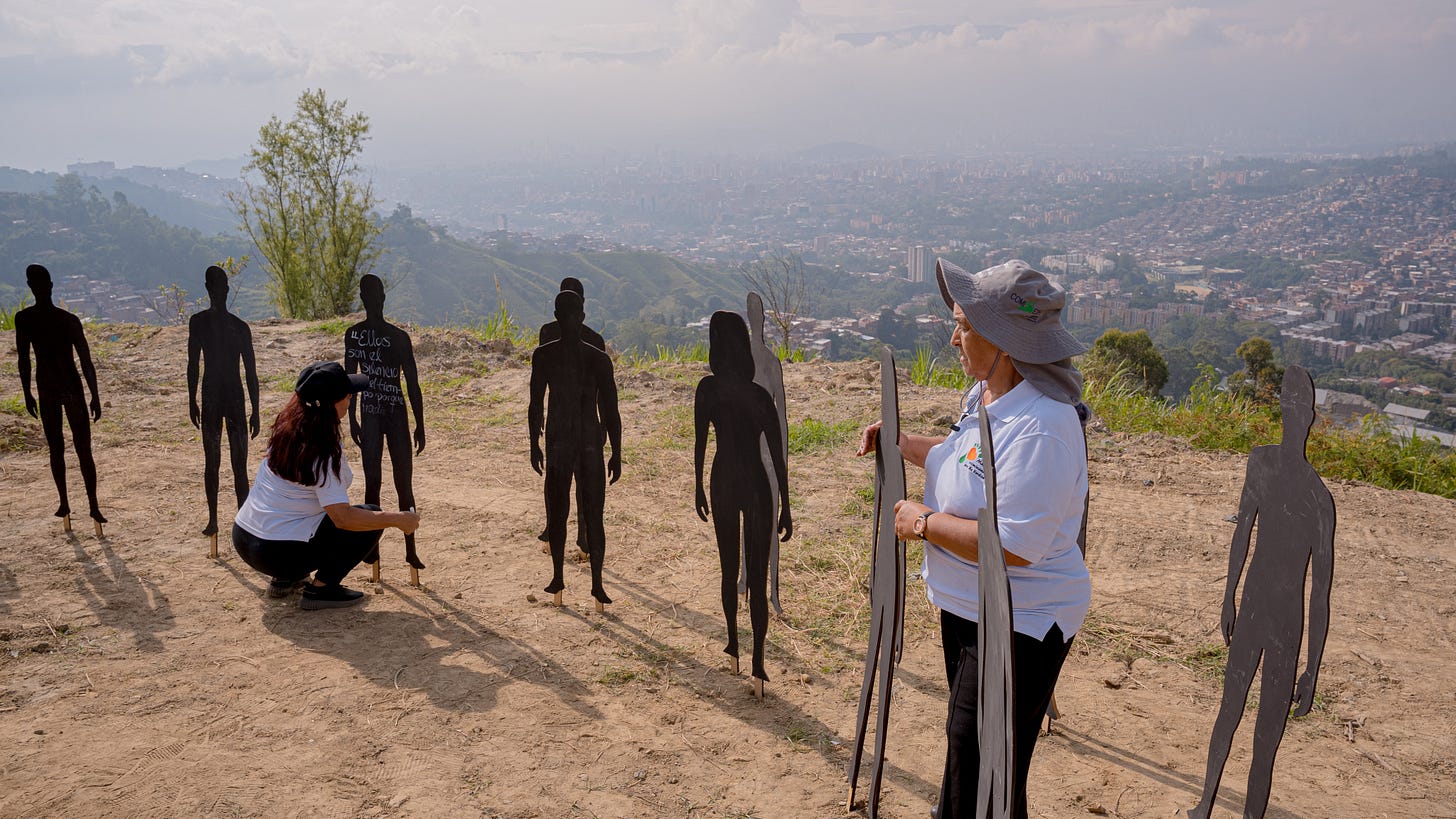
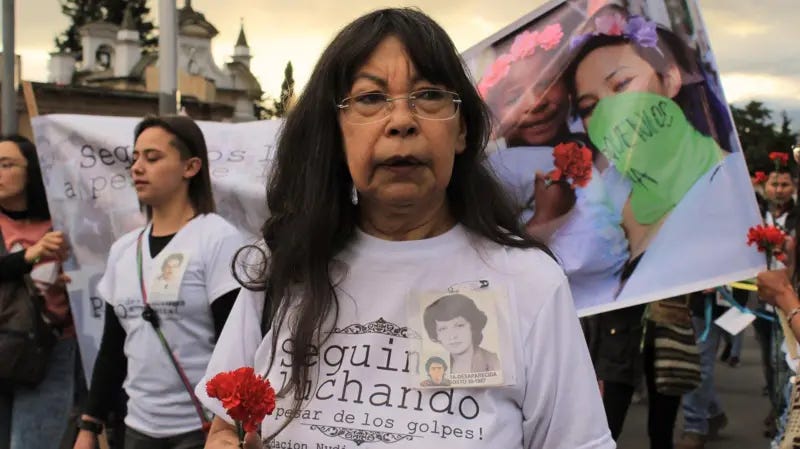

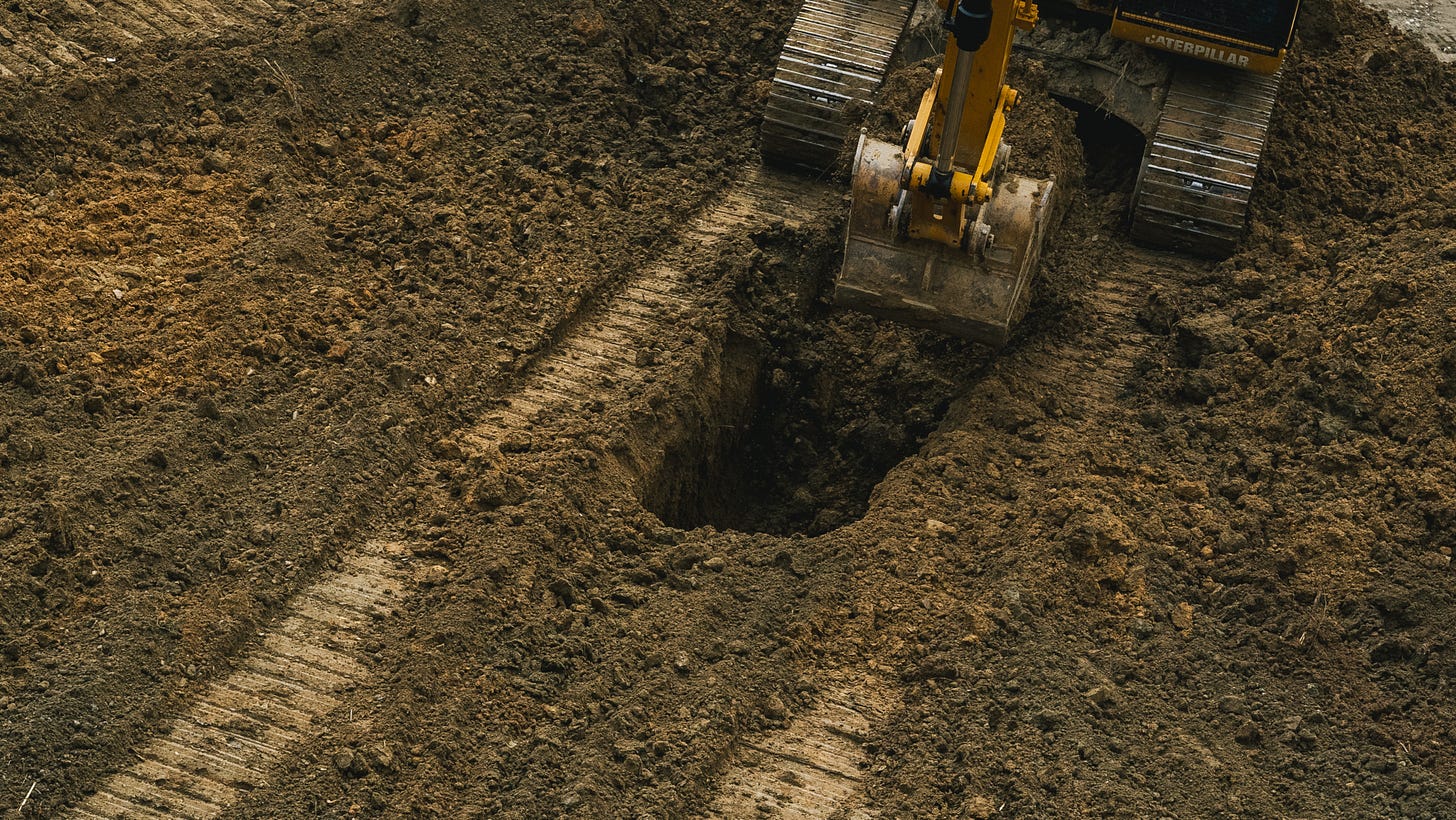
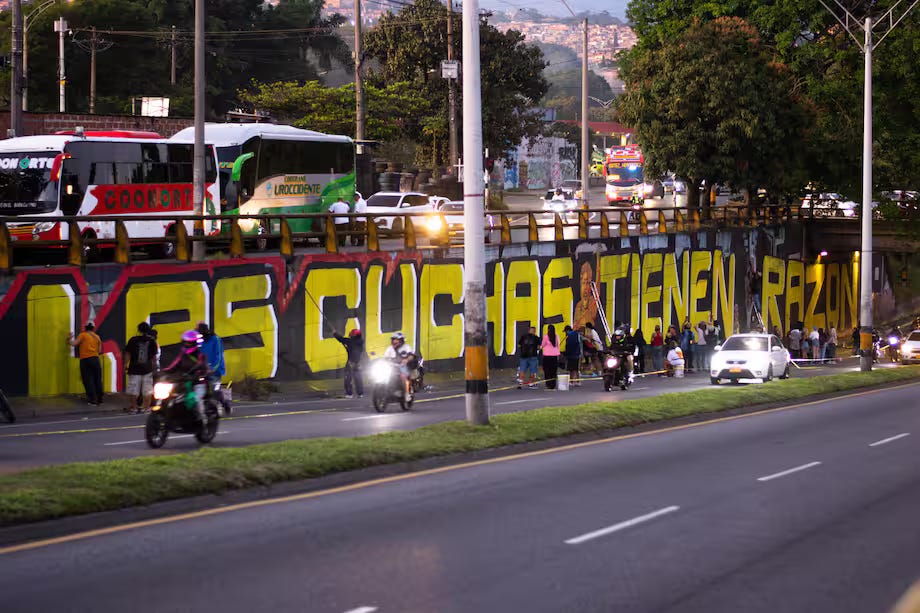

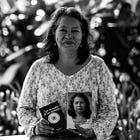





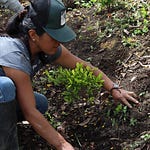
Share this post